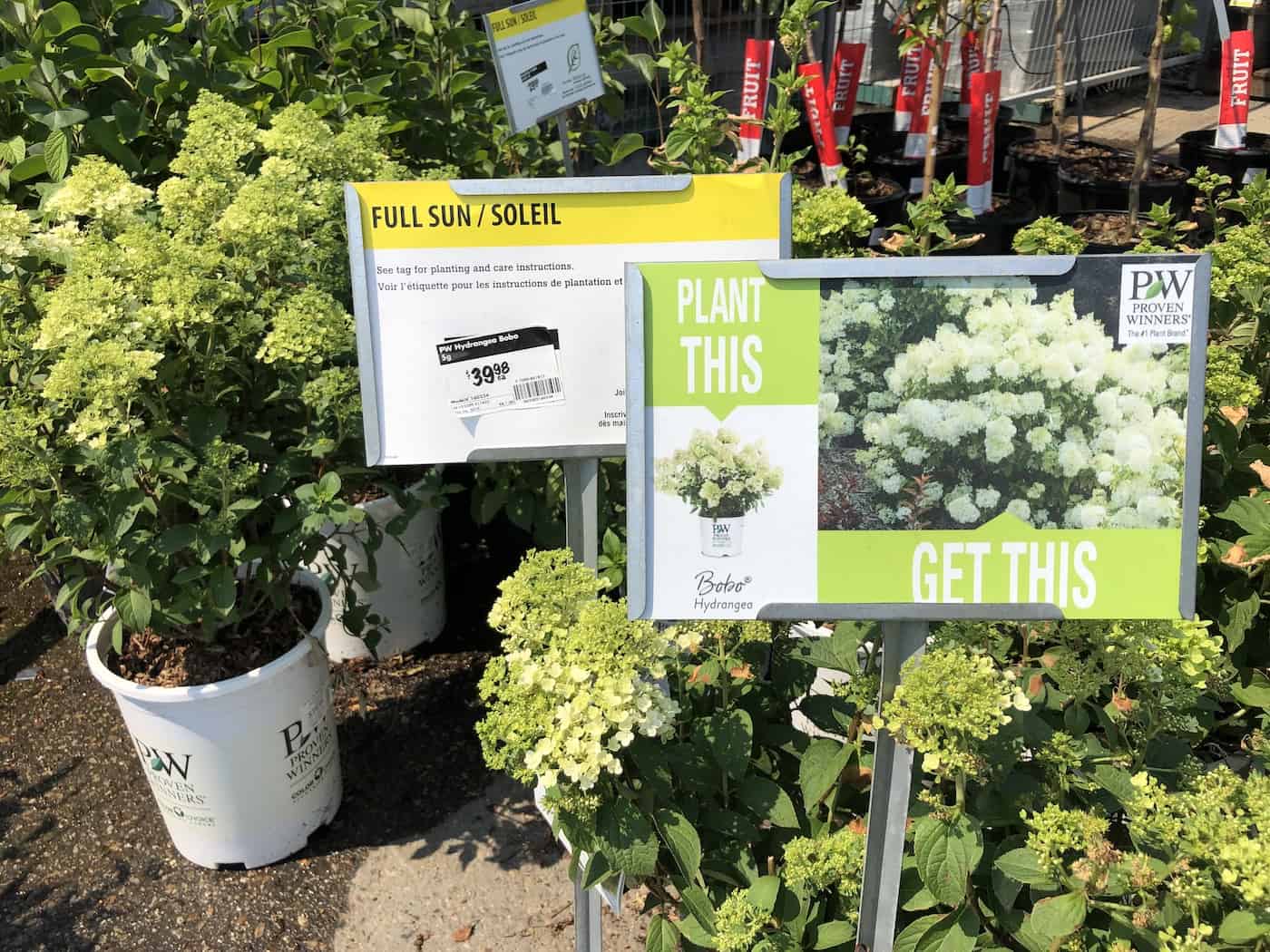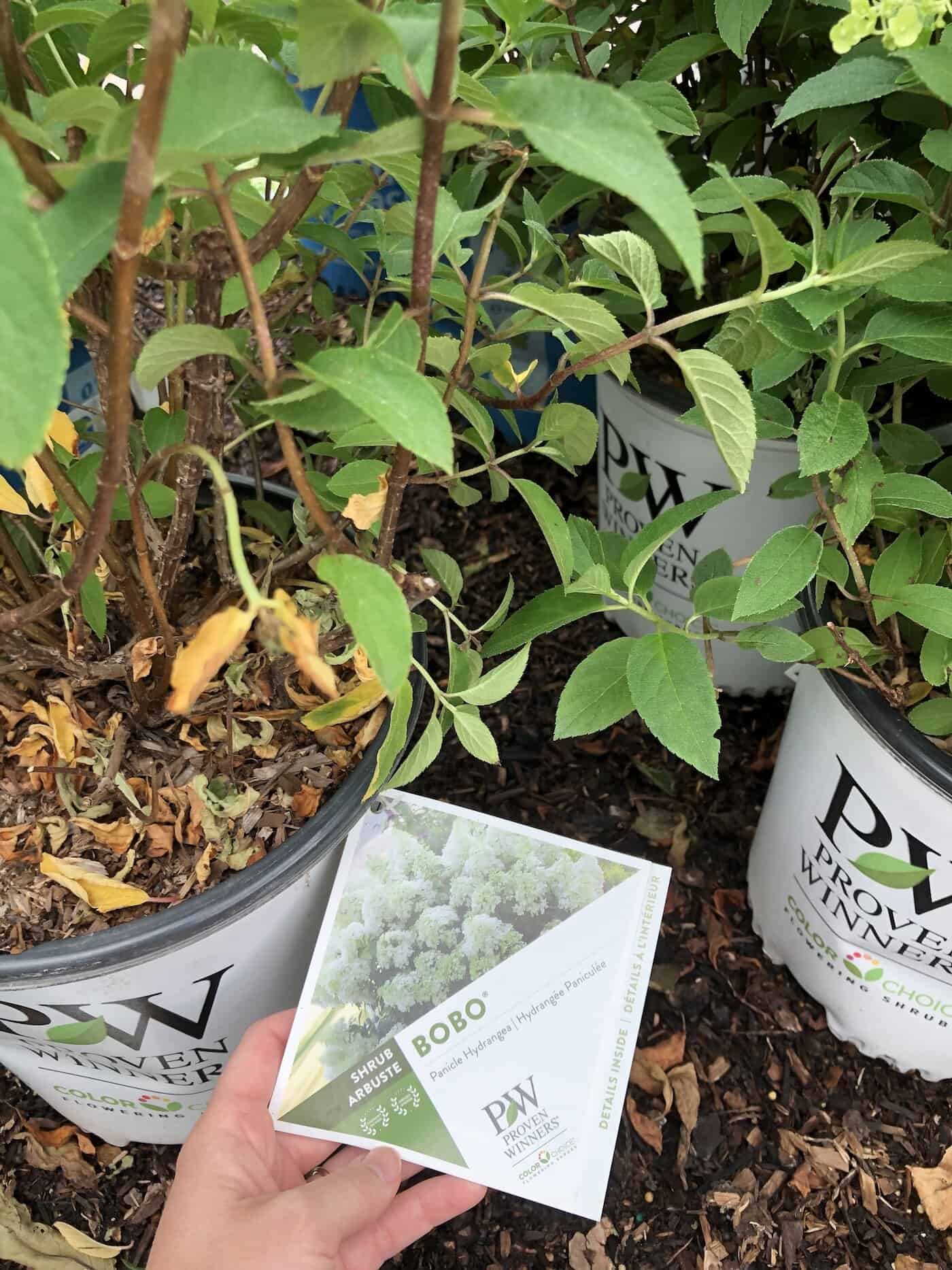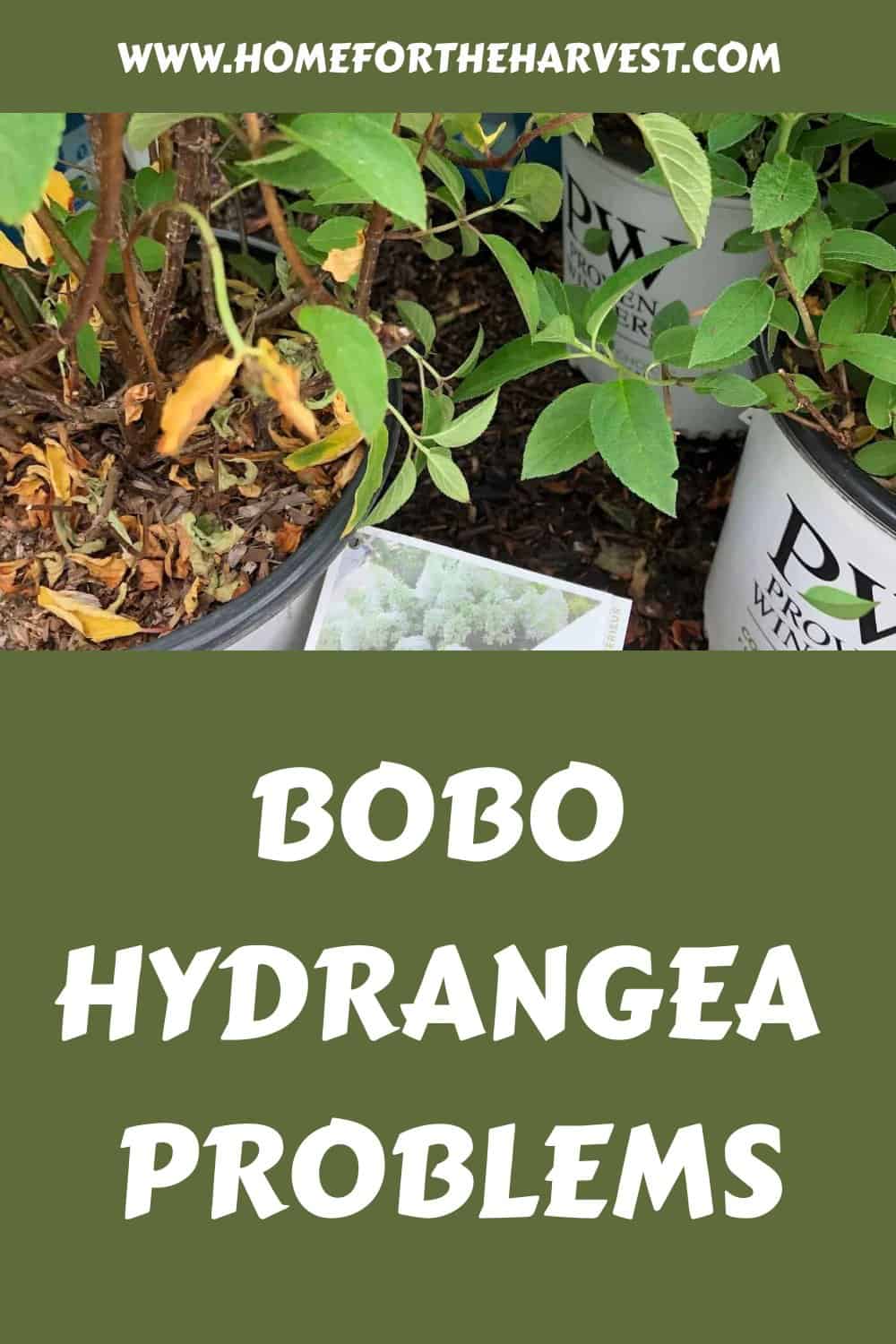The most common bobo hydrangea problems include diseases, insect infestations, and pruning tips, as well as watering guidelines for keeping your plant healthy and happy. With just a few simple steps, you can get back on track to having beautiful blooms year after year.

Identifying Bobo hydrangea problems
Bobo hydrangeas are a beautiful addition to any garden but can be prone to certain problems. Identifying and preventing these issues is key to keeping your hydrangea plant healthy and happy.
Common diseases
One of the most common diseases affecting Bobo hydrangeas is powdery mildew. This fungal disease appears as white or gray patches on the leaves and stems of the plant. If left untreated, it can cause yellowing, wilting, and premature leaf drop.
To prevent powdery mildew from occurring, make sure it has plenty of air circulation around its foliage and avoid overhead watering, which can spread spores onto other plants in your garden.
Insect infestations
Another issue affecting many plant types is insect infestation, such as aphids or scale insects. These pests feed on the sap from the leaves and stem, causing discoloration, curling leaves, stunted growth, or even death if left unchecked for too long.
The best way to get rid of them on woody shrubs like panicle hydrangeas is first to knock off as many insects as possible by spraying the plant with a sharp stream of water from the hose. Then use an organic insecticidal soap spray that kills adult insects and their eggs without harming beneficial pollinators like bees or butterflies in your garden.
Pruning tips
Proper pruning techniques are important for keeping your Bobo Hydrangea looking its best throughout the year. Start by removing dead branches during late winter before new growth begins in springtime; this will help encourage healthier blooms later on in summertime when flowers appear.
Also, trim back any overgrown branches so that light can reach all parts of the shrub evenly throughout its growing season. This helps promote better flowering overall.
Watering tips
Make sure you give it enough water during dry spells but do not overwater it either. Aim for about 1 inch per week, depending on soil type (sandy soils require more frequent watering than clay-based ones). Additionally, try not to wet foliage frequently while irrigating since this could lead to fungal diseases developing down the line.

Common diseases affecting panicle hydrangeas
The most common diseases for Bobo hydrangeas include powdery mildew, leaf spot, and root rot.
Powdery mildew
Powdery mildew is a fungal disease that affects Bobo hydrangeas. It’s recognizable by its white, powder-like spots on the leaves and stems of the plant. The affected areas may become distorted or yellowed as well.
To prevent this disease, ensure your plants get plenty of air circulation and water them at ground level instead of from above to avoid wetting the foliage. Prune away any dead or diseased branches to reduce the spread of infection.
Leaf spot
Leaf spot is another common problem for Bobo hydrangeas. This fungus causes circular spots with reddish-brown borders on leaves, often accompanied by yellowing around the edges. If left untreated, the leaf spots can cause defoliation in severe cases.
To help protect your plants from this disease, ensure they receive enough light and water them regularly but not too much so that their roots don’t rot in overly moist soil conditions. Pruning off infected leaves can also help stop them from spreading further throughout your garden bed or potting container if necessary.
Root rot
Root rot is caused by overwatering and poor drainage, which leads to soggy soil conditions where fungi thrive and damage plant roots over time. This can result in wilted foliage and stunted growth, eventually leading to death if not treated.
Root rot in outdoor plants can be treated in a variety of ways. in mild cases, simply stop watering it so frequently, and let the soil dry out a bit between waterings. If the soil always seems to be damp or even muddy, consider transplanting the plant to a drier or raised area and improving the soil with some perlite and/or sand. Also, ensure the plant receives enough sunlight and air circulation to thrive.
Insect infestations by common pests
It’s important to be aware of the potential for insect infestations when caring for Bobo hydrangeas. Insects such as aphids, mealybugs, and scales can cause damage if left unchecked. Fortunately, it’s easy to recognize signs of an infestation and take steps to get rid of them.
Aphids are small insects that feed on plant sap. They often appear in clusters on stems or leaves and may leave a sticky residue behind. To remove aphids from your Bobo hydrangea, spray them with water from a garden hose or use an insecticidal soap solution. Be sure to spray both sides of the leaves so you don’t miss any hidden bugs!
Mealybugs are tiny white insects that look like cotton balls stuck to stems or leaves. They feed on plant juices and excrete honeydew which can lead to mold growth if not treated quickly enough. To get rid of mealybugs, wipe off affected areas with rubbing alcohol using a cloth or paper towel, then rinse with water from a garden hose afterward. You may also want to apply neem oil as a preventative measure against future infestations since this natural product is known for its repellent properties against many types of pests, including mealybugs!
Scale insects are usually found near leaf veins where they suck out plant juices leaving yellow spots behind on foliage surfaces while secreting honeydew which attracts ants and other pests into your garden area as well as promotes mold growth due to its sugary content. If you find scale insects present in your Bobo hydrangea plants, try spraying them with horticultural oil mixed according to their instructions and label directions – this will help smother the scales without harming beneficial pollinators like bees who visit your flowers during bloom time!
Finally, pruning is another way you can reduce pest populations around your Bobo hydrangeas by removing dead branches where these critters tend to congregate. Just make sure not to cut too much into healthy wood, as this could open up new entry points for disease-causing organisms like fungi spores, which thrive in moist environments created by wounds made during pruning activities.
Pruning tips for troubleshooting
Pruning is essential to keeping your Bobo hydrangea healthy and looking its best. Pruning helps promote strong, vibrant growth by removing dead or damaged branches, encouraging new blooms, and controlling the size of the plant. When done correctly, pruning can help maintain a neat shape and keep your Bobo hydrangea looking beautiful for years to come.
The best time to prune your Bobo hydrangea is in late winter or early spring before new growth begins. This will give you plenty of time to assess any damage from the previous season as well as prepare for upcoming blooms. Start by removing any dead or diseased branches with sharp pruners or loppers—this will help prevent the disease from spreading throughout the plant. Then, trim away any crossing branches that are rubbing against each other; this will encourage air circulation, which is important for preventing fungal diseases like powdery mildew. Finally, if needed, you can lightly trim back some of the longer stems to control size and shape while still allowing room for new growth in springtime.
When it comes to cutting off larger sections of the stem, be sure not to remove more than one-third at a time—too much pruning could cause stress on the plant’s root system and stunt its overall growth potential over time. Additionally, make sure all cuts are clean, so they don’t leave behind stubs that may invite pests into your garden later on down the line!
Watering guidelines
Here are the basics for watering your Bobo hydrangea to nurse it back to health.
Best time of day to water
It is best to water your Bobo hydrangeas in the morning. This allows the plants time to absorb the moisture before it evaporates during mid-day heat. It also helps prevent fungal diseases, which can be made worse by damp, cool foliage.
How much water do these shrubs need?
Bobo hydrangeas need about 1-2 inches of water per week, depending on how hot and dry it is outside. If you’re unsure if your plants are getting enough water, check for wilting leaves or browning edges – this could indicate that they need more hydration. You should also feel around their soil; if it feels dry several inches down, then it’s time to give them a drink!






